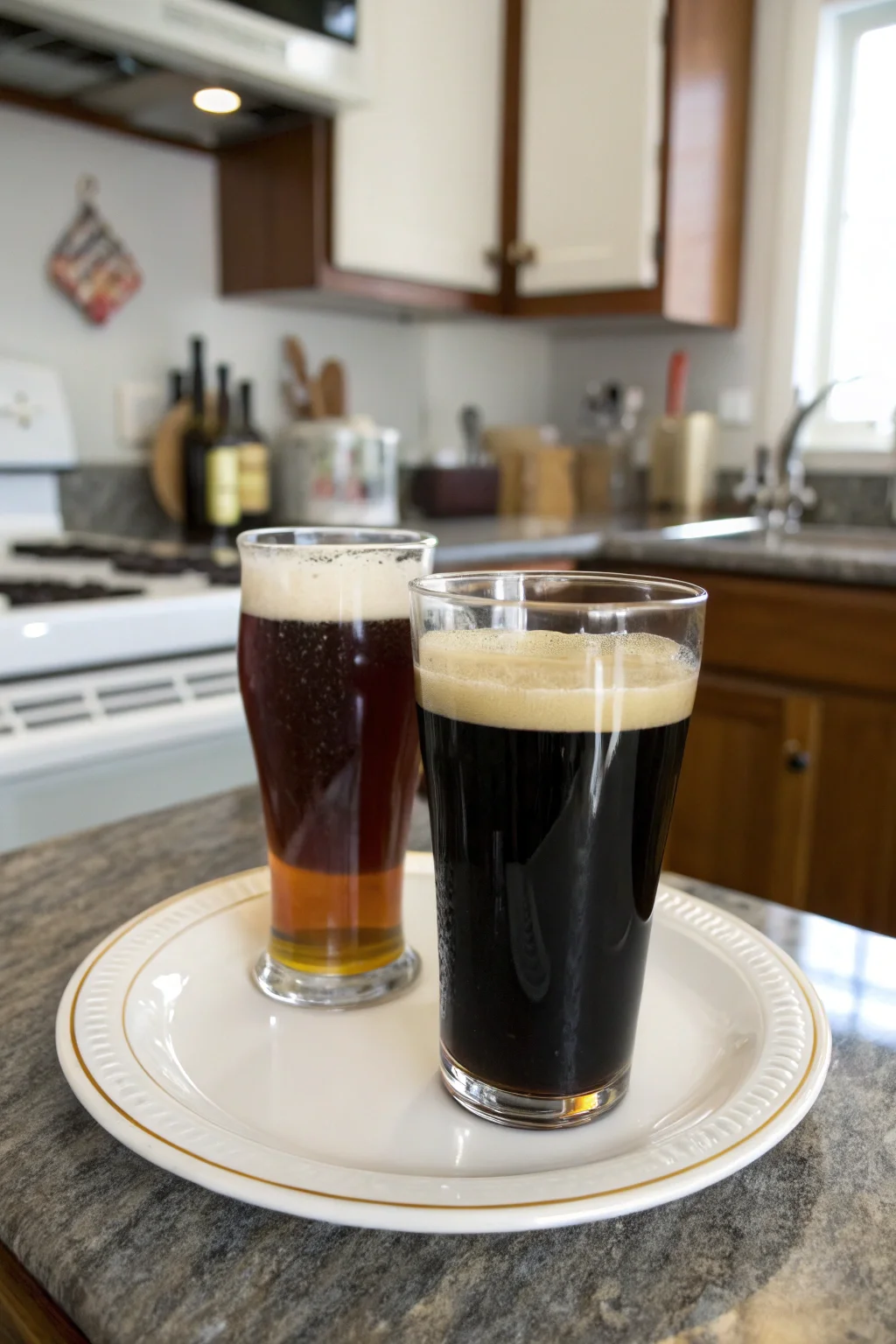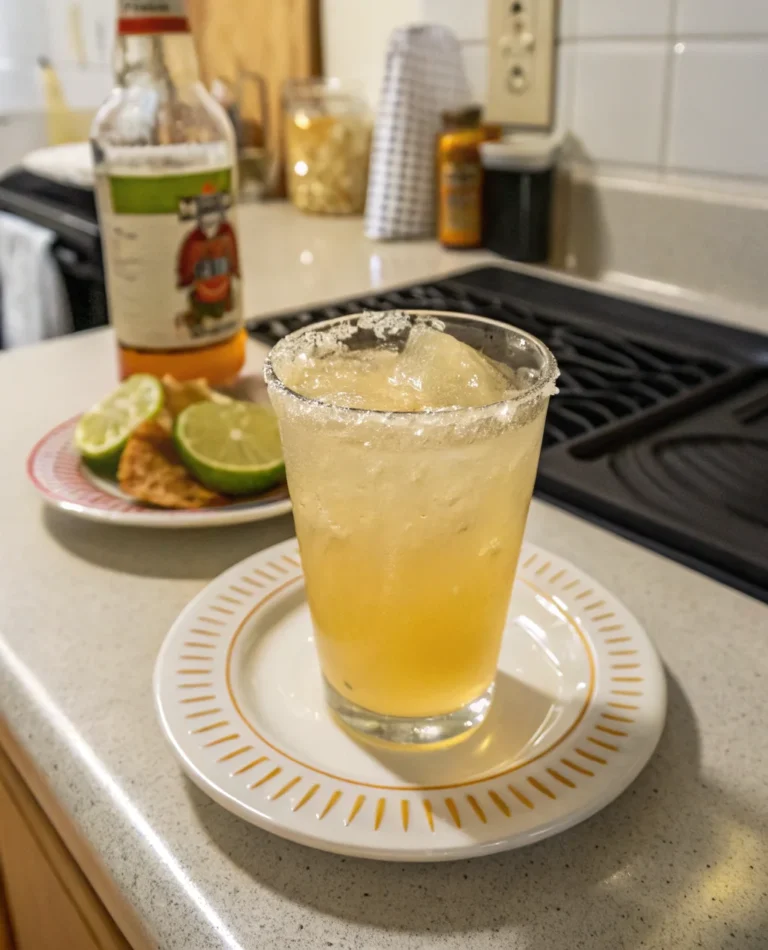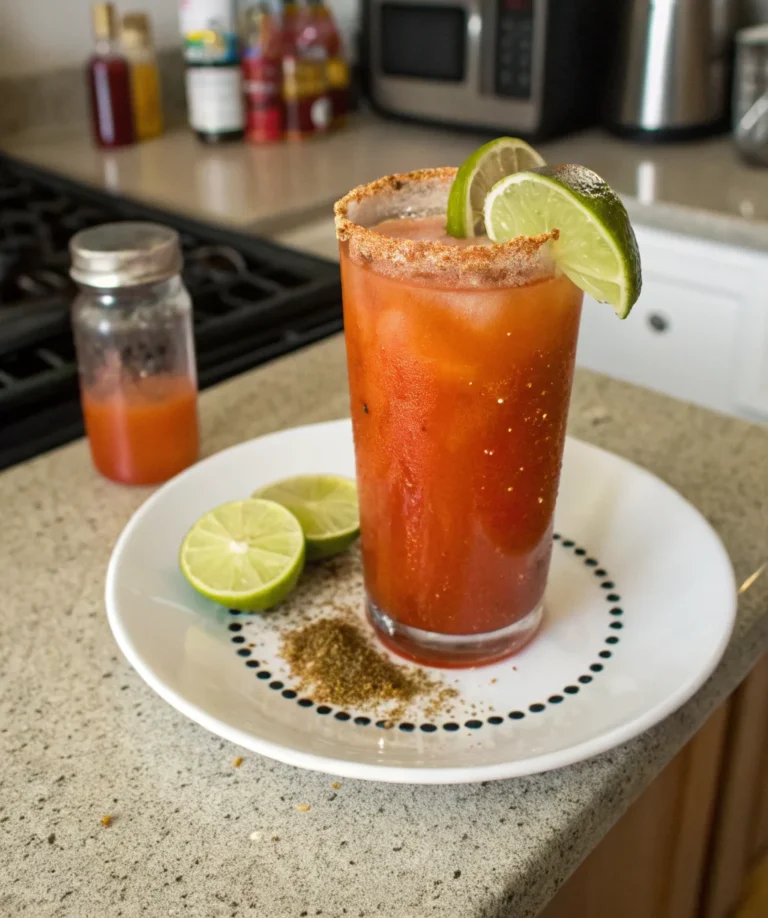Stout and Ale
Introduction
There’s something magical about a perfectly layered drink; the visual appeal is only rivaled by its delightful taste. Today, we’re diving into the world of “Stout and Ale,” a drink that marries the robust flavors of a stout with the crispness of a lager. This drink is not just a simple brew; it’s an experience. Imagine a chilly evening in Ireland, the warm glow of a pub, and laughter echoing around you. That’s the spirit we capture when we pour a “Stout and Ale.” Growing up, my grandfather would often share stories of his days in Dublin, where he first introduced me to the art of layering beers. He taught me the patience and precision it required, and as I grew older, this became my go-to drink for family gatherings. It’s more than just a drink; it’s a tradition, a story waiting to be told with every pour.
Table of Contents
Why This Recipe Works
• Visual Appeal: The distinct layers of the stout and lager create a stunning visual presentation, instantly elevating any gathering.
• Flavor Balance: The rich, creamy texture of the stout complements the crisp, light lager for a balanced flavor profile.
• Simplicity: With only two ingredients and a few steps, this recipe is accessible even for novice home cooks.
• Quick Preparation: In just five minutes, you can have a sophisticated drink ready to serve.
• Cultural Connection: This recipe brings a touch of Irish pub culture into your home, creating a cozy and inviting atmosphere.

Ingredients
• Lager Beer (12 fluid ounces): A lighter beer such as Harp® provides the perfect base for layering, offering a crisp contrast to the stout.
• Irish Stout Beer (12 fluid ounces): A classic like Guinness® adds depth and richness, essential for achieving the iconic two-tone effect.
Step-by-Step Instructions
- Divide the Lager: Begin by dividing the lager beer evenly between two tall beer glasses. The lager forms the foundational layer, setting the stage for the stout. Using a tall glass not only enhances the aesthetic but also allows for better control when pouring the stout.
- Prepare for Layering: Take a large tablespoon and hold it dome-side up, about one inch above the lager. The tip of the spoon should be slightly downward. This technique is crucial as it helps to gently diffuse the stout, preventing it from mixing with the lager.
- Pour the Stout: Slowly pour half of the stout beer over the tablespoon. Allow the stout to trickle gently down the side of the glass. The slow pour and the spoon work together to form the distinct layers. Patience is key here; rushing can cause the layers to mix.
- Wait and Observe: Let the drink stand for 3 to 5 seconds. This pause allows the layers to settle and form a clear division. Watching the layers take shape is part of the charm.
- Repeat: Repeat the layering process with the remaining glass. Consistency in technique ensures both drinks have the same visual and flavor quality.
- Serve Immediately: Enjoy your “Stout and Ale” while it’s fresh. The contrast between the stout and lager is best appreciated when the drink is freshly poured.
Prep Time: 5 minutes
Cooking Time: 0 minutes
Total Time: 5 minutes
Yield: 2 Servings
Table: Calorie Breakdown for a Typical Serving
| Component | Calories | Carbs (g) | Protein (g) | Fat (g) | Sugar (g) |
|---|---|---|---|---|---|
| Lager Beer | 150 | 13 | 2 | 0 | 0 |
| Irish Stout | 125 | 10 | 1.5 | 0 | 0 |
| Total | 275 | 23 | 3.5 | 0 | 0 |

Patricia’s Tips for Success
Tip 1: Use a cold glass to help maintain the integrity of the layers. A warm glass can cause the beers to mix.
Tip 2: Pour the stout slowly and steadily. A rushed pour can lead to a muddled drink.
Tip 3: Experiment with different brands of lager and stout to find your perfect combination. Each beer has its unique flavor profile.
Tip 4: If you’re new to layering drinks, practice makes perfect. Don’t be discouraged if your first attempt isn’t flawless.
Tip 5: Serve your “Stout and Ale” with a smile; presentation is as much about the experience as it is about the drink itself.
Cooking Variations
Variation 1: Use a flavored stout, such as a chocolate or coffee stout, for an added layer of complexity.
Variation 2: For a lighter version, try using a pale ale instead of a lager. This variation offers a different take on the classic drink.
Variation 3: Add a dash of Irish cream liqueur to the stout for a creamy twist.
Serving Suggestions
Suggestion 1: Pair your “Stout and Ale” with hearty dishes like shepherd’s pie or beef stew, which complement the drink’s robust flavors.
Suggestion 2: Serve alongside a cheese platter featuring sharp cheddars and blue cheeses for a sophisticated appetizer.
Suggestion 3: Enjoy your drink with a side of salted pretzels; the saltiness enhances the flavors of both the lager and the stout.
Additional Thoughts
Creating a “Stout and Ale” is more than just mixing two beverages; it’s about embracing a tradition that has been cherished for generations. My grandfather’s stories of Dublin pubs and the camaraderie found in sharing a drink inspired my love for this recipe. The drink itself is a testament to the art of balance—not only in flavor but in the experience it offers. Each time I prepare this drink, I’m reminded of those evenings in my grandmother’s kitchen, where we would gather around the table, sharing stories and laughter. The simplicity of this recipe belies the depth of its impact. It’s a drink that invites you to slow down, savor, and appreciate the moment. Whether you’re a seasoned home cook or new to the kitchen, “Stout and Ale” is a recipe that welcomes everyone. The layering technique may seem daunting at first, but with a little patience and practice, it becomes second nature. This drink is perfect for any occasion, whether it’s a casual evening with friends or a special celebration. It’s a conversation starter, a centerpiece, and a delight to both the eyes and the palate. Sharing a “Stout and Ale” is about more than just the drink itself; it’s about the connections we make and the memories we create. This recipe holds a special place in my heart, and I hope it finds a place in yours as well. As you pour your first “Stout and Ale,” take a moment to enjoy the process and the satisfaction that comes with creating something beautiful. Cheers to new traditions and the joy of sharing them with others.
Join the Conversation
I’d love to hear about your experiences with “Stout and Ale.” Did you give it a try for the first time, or are you a seasoned pro? Share your stories, tips, and any variations you experimented with. Your feedback not only helps me improve my recipes but also inspires others to try their hand at this delightful drink. Let’s create a community where we celebrate the joy of cooking and sharing. Leave a comment below or join the conversation on social media. Together, we can keep the tradition of “Stout and Ale” alive and thriving.
Conclusion
“Stout and Ale” is more than just a drink; it’s a celebration of flavors and traditions. With its simple ingredients and easy preparation, it’s a recipe that any home cook can master. Whether you’re looking to impress guests or simply enjoy a cozy evening at home, this drink offers the perfect balance of taste and presentation. Embrace the art of layering, and let “Stout and Ale” become a staple in your culinary repertoire. Cheers to good times, great flavors, and the joy of sharing them with those we love.
Frequently Asked Questions
Q: Can I use any type of lager and stout for this recipe?
A: Yes, feel free to experiment with different brands to find your preferred flavor combination.
Q: What if my layers mix?
A: Don’t worry! It takes practice. Ensure you’re pouring slowly and using a cold glass.
Q: Can I make this drink in advance?
A: It’s best enjoyed fresh. The layers are most distinct when served immediately.
Q: How do I clean the glasses without disturbing the layers?
A: Simply rinse with cold water before pouring to maintain the clarity of the layers.
Q: Can I add other ingredients to the drink?
A: You can experiment with flavorings like a splash of liqueur, but be mindful of altering the balance.
Q: Is it necessary to use a spoon for layering?
A: The spoon helps achieve the distinct layers by controlling the flow of the stout.
Q: What glass is best for serving?
A: A tall beer glass enhances the visual appeal and allows for better layering.
Stout and Ale
Course: BeverageCuisine: AmericanDifficulty: EasyThis black and tan-colored beer cocktail is a must-have for St. Patrick’s Day celebrations. Despite its simple ingredients, the key to success lies in mastering the layering technique. Pouring the stout slowly is essential for achieving the perfect visual effect. Cheers to enjoying this classic drink!
Ingredients
1 (12 fluid ounce) bottle lager beer (such as Harp®)
1 (12 fluid ounce) can or bottle Irish stout beer (such as Guinness®)
Directions
- Divide the lager beer evenly between 2 tall beer glasses.
- Working with one glass at a time, place a large tablespoon, dome-side up, 1 inch above the lager beer, with the tip of the spoon pointed slightly downward.
- Slowly pour half of the stout beer over the tablespoon, allowing it to gently trickle down the side of the glass.
- Let it stand for 3 to 5 seconds until two distinct layers of beer form.
- Repeat the layering process with the remaining glass of beer.
- Serve immediately and enjoy your Stout and Ale.








